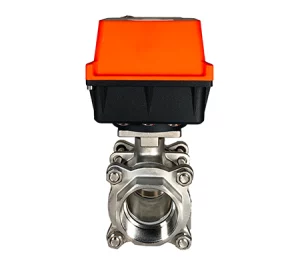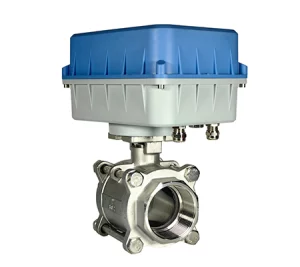Avoid your inquiry is delay response, please enter your WhatsApp/WeChat/Skype along with the message, so we can contact you at the very first time
We will reply you within 24 hours. If for urgent case, please add WhatsApp: +8613188899036, or WeChat: 0531-87968777. Or call 0531-87968777 directly.
* We respect your confidentiality and all information are protected. We will only use your information to respond to your inquiry and will never send unsolicited emails or promotional messages.
Are you facing leaky valves in your industrial system? Do those sudden breakdowns cost you thousands in downtime? Is corrosion eating away at your equipment and your profits?
These problems plague industries worldwide. When valves fail, production stops. When production stops, money bleeds. And when systems use the wrong valve materials, these failures happen far more often than they should.
The solution? Stainless steel ball valves – the unsung heroes of modern industrial systems. Let’s explore why they’ve become essential components across countless applications.
Ball valves work by turning a ball with a hole through it to control flow. When the hole aligns with the pipe, flow happens. When rotated 90 degrees, it stops. Simple!
Why choose stainless steel? These valves offer:

What Makes Stainless Steel Ball Valves Essential
Look at how the market values these critical components:
| Metric | Value |
| Global Ball Valves Market (2025) | $13.09 Billion |
| Stainless Steel Segment | ~34% (Largest material segment) |
| Growth Rate (2025-2035) | 6.8% CAGR |
| Asia-Pacific Market Share | >37% of Revenue |
The numbers tell a clear story – industries trust stainless steel for their most critical valve applications.
Not all stainless steel is the same:
“The right material choice can triple valve lifespan in corrosive environments.”
Your application determines which design works best:
At Navarch, we’ve seen how crucial these distinctions are in real-world applications. The wrong selection can lead to premature failures and system inefficiency.
| Parameter | Standard | Typical Value |
| Leakage Rate | API 598/ISO 5208 | ≤0.1 bubbles/min |
| Temperature Range | AISI 316 | -40°C to +220°C |
| Fire Safety | API 607/API 6FA | 30-min fire survival |
| Maintenance Cycle | Industrial | 5-7 years vs. 2-3 for brass |
In chemical processing, the right valves prevent dangerous leaks. One electroplating facility replaced 50 valves with 316L stainless steel models and eliminated acid corrosion problems completely. Zero leaks for two full years!
For oil and gas applications, high-pressure trunnion ball valves certified to API 6D have shown zero failures even in sour gas service.
These industries demand absolute cleanliness. Intelligent heat-saving systems with stainless steel valves meet 3-A sanitary standards and pass FDA audits consistently.
In saltwater environments, 316 stainless steel valves resist pitting and last three times longer than carbon steel alternatives. Smart water valve systems with stainless components ensure reliability in these challenging conditions.
Even the best valves need proper care:
While stainless steel valves cost 25-50% more upfront than brass alternatives they reduce total cost of ownership by 40% through lower maintenance needs .
Traditional valve systems often face three major challenges:
These problems get worse in demanding industrial settings. Many facilities struggle with:
The frustration builds as maintenance teams repeatedly address the same issues. Operators watch production schedules slip while waiting for replacement parts.

Stainless Steel Electric Valve
Modern manufacturing demands more than just basic flow control. Today’s systems need integrated solutions that enhance overall efficiency.
With flow regulating valves and pressure regulating valves, systems maintain optimal performance even as conditions change. These intelligent components adjust automatically to maintain perfect balance.
Leading manufacturers like Navarch focus on complete system integration. With annual production capacity of 8,000 tons of valves across five efficient production lines, they deliver both standard and customized solutions. Their technical teams specialize in research, development and testing to ensure reliability in the most demanding applications.
A food processing plant faced high energy bills and inconsistent heating. After installing intelligent valves with smart control systems:
This transformation came from understanding the relationship between valve selection, system design, and control technology.
The valve industry continues to evolve rapidly:
Companies investing in strategic locations near transportation hubs can respond quickly to changing market needs. This positioning, combined with strong technical capabilities, allows leading manufacturers to drive innovation in valve technology.
When selecting stainless steel ball valves, consider:
Working with experienced teams who understand heating, water supply, and energy-saving applications ensures you get valves that deliver long-term reliability.
Stainless steel ball valves solve critical problems across countless industries. By choosing the right valve with appropriate materials, design, and features, you eliminate common headaches that plague industrial systems.
The best approach combines quality components with intelligent system design. Whether you need basic flow control or comprehensive energy-saving solutions, today’s manufacturers offer options that increase efficiency, reduce maintenance, and improve overall system performance.
Look beyond the immediate valve price to consider total lifetime value. The right stainless steel ball valve pays for itself many times over through reduced downtime, lower maintenance costs, and improved operational efficiency.
Remember that valve selection is just one part of optimizing your system. For truly transformative results, consider how valves integrate with complete control systems to maximize energy efficiency and operational reliability.
Would you like to learn more about intelligent valve solutions for your specific application? Explore how the right components can transform your system’s performance and reliability while dramatically reducing operating costs.